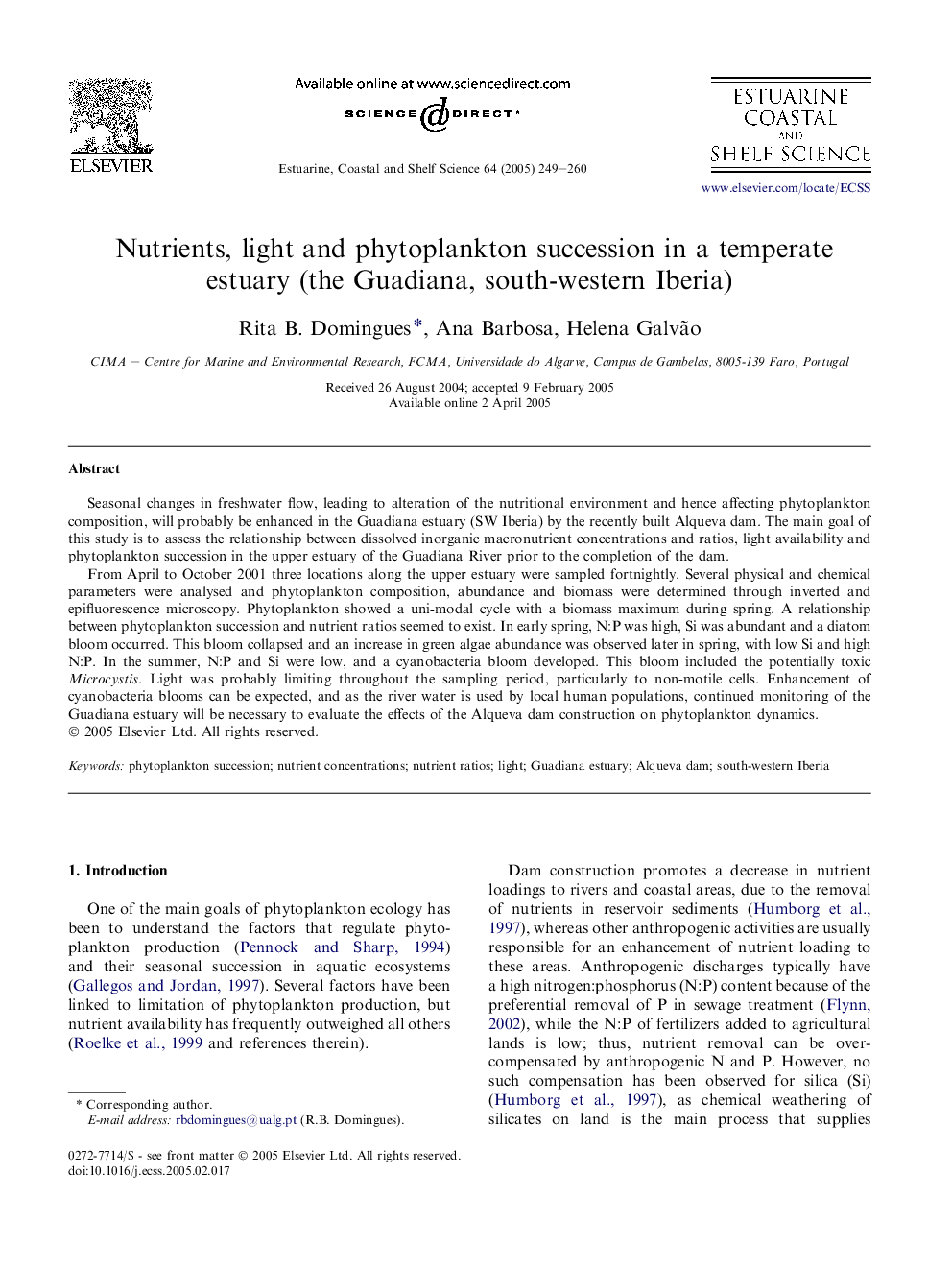| Article ID | Journal | Published Year | Pages | File Type |
|---|---|---|---|---|
| 9480572 | Estuarine, Coastal and Shelf Science | 2005 | 12 Pages |
Abstract
From April to October 2001 three locations along the upper estuary were sampled fortnightly. Several physical and chemical parameters were analysed and phytoplankton composition, abundance and biomass were determined through inverted and epifluorescence microscopy. Phytoplankton showed a uni-modal cycle with a biomass maximum during spring. A relationship between phytoplankton succession and nutrient ratios seemed to exist. In early spring, N:P was high, Si was abundant and a diatom bloom occurred. This bloom collapsed and an increase in green algae abundance was observed later in spring, with low Si and high N:P. In the summer, N:P and Si were low, and a cyanobacteria bloom developed. This bloom included the potentially toxic Microcystis. Light was probably limiting throughout the sampling period, particularly to non-motile cells. Enhancement of cyanobacteria blooms can be expected, and as the river water is used by local human populations, continued monitoring of the Guadiana estuary will be necessary to evaluate the effects of the Alqueva dam construction on phytoplankton dynamics.
Keywords
Related Topics
Physical Sciences and Engineering
Earth and Planetary Sciences
Geology
Authors
Rita B. Domingues, Ana Barbosa, Helena Galvão,
